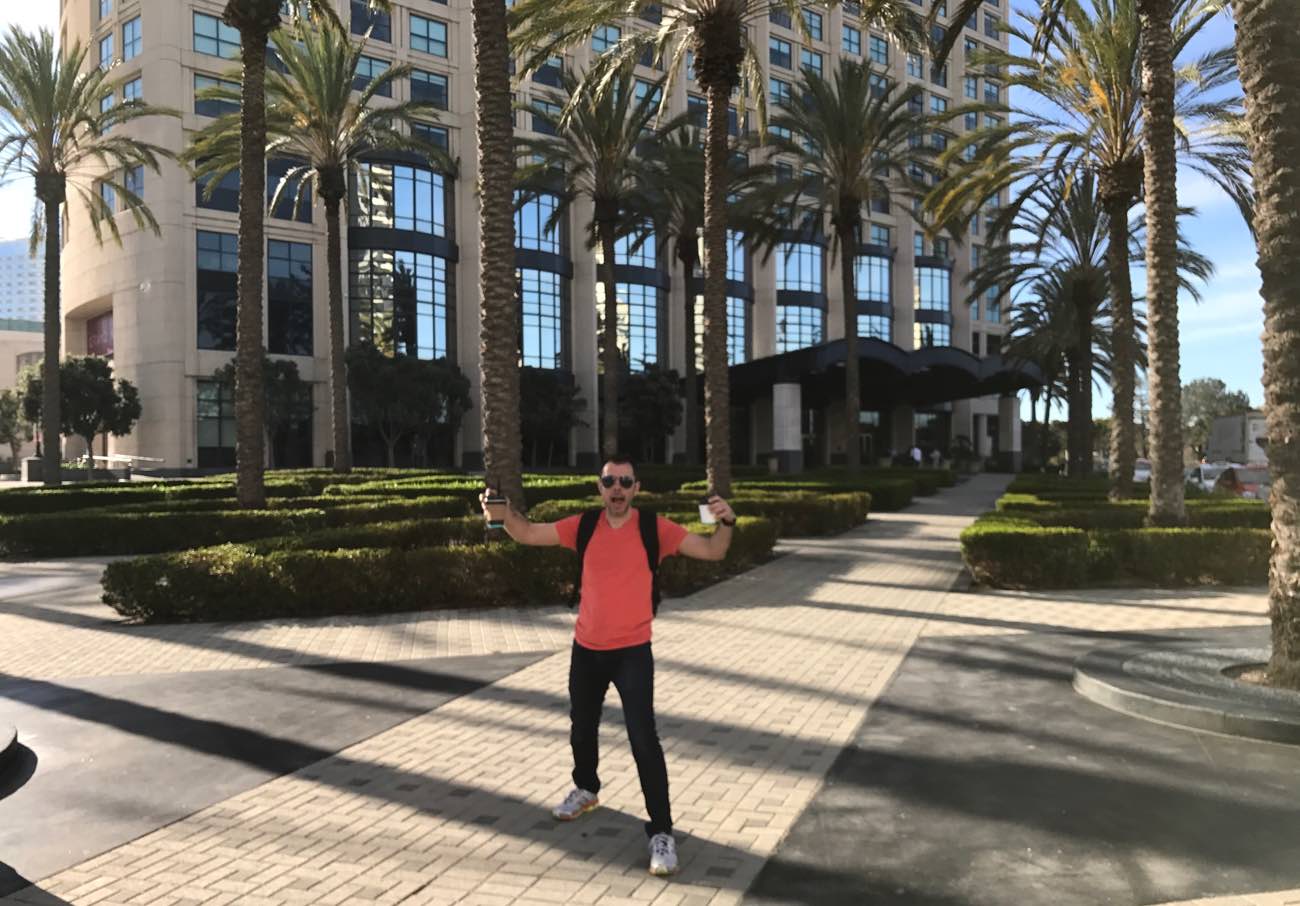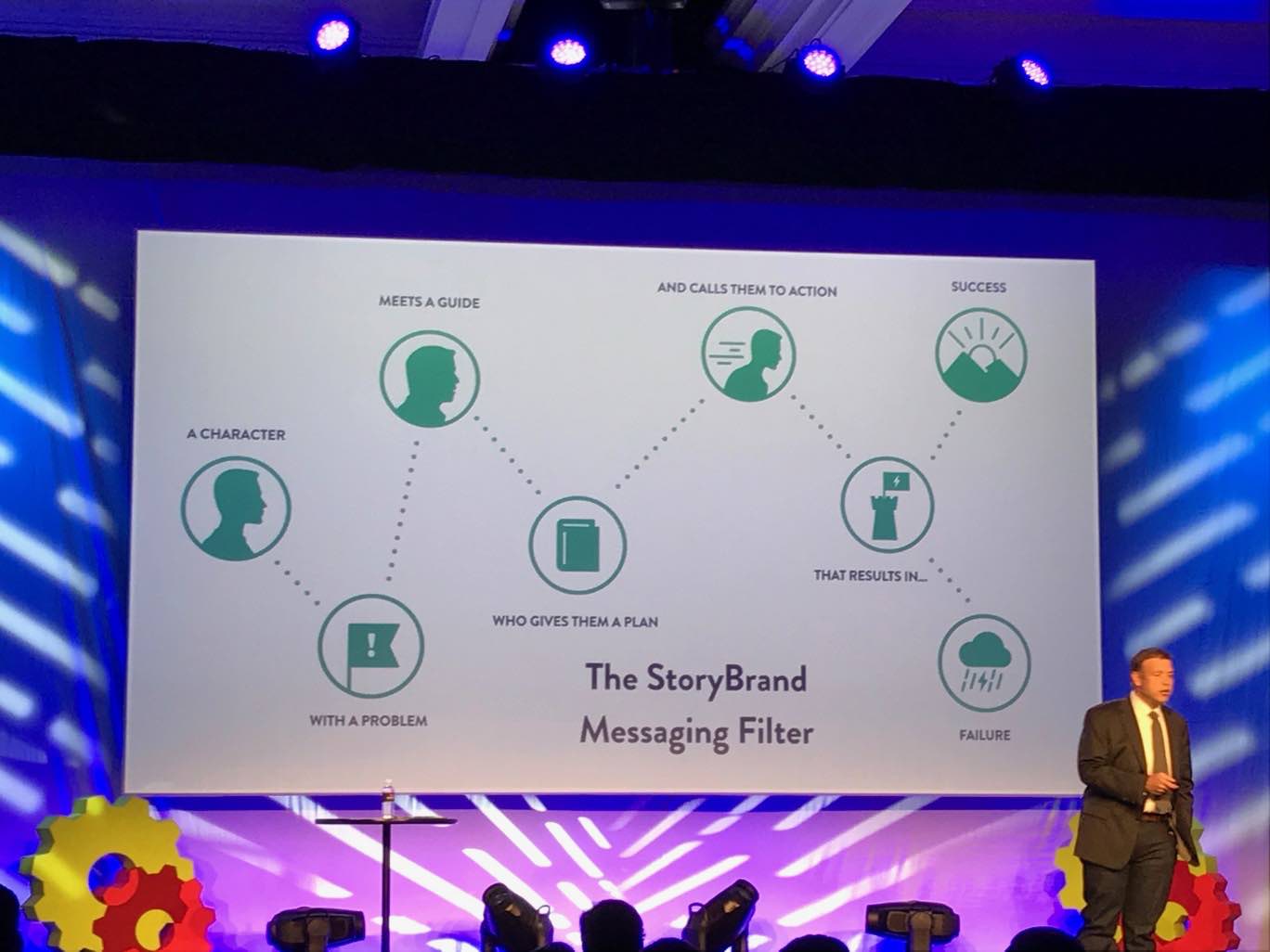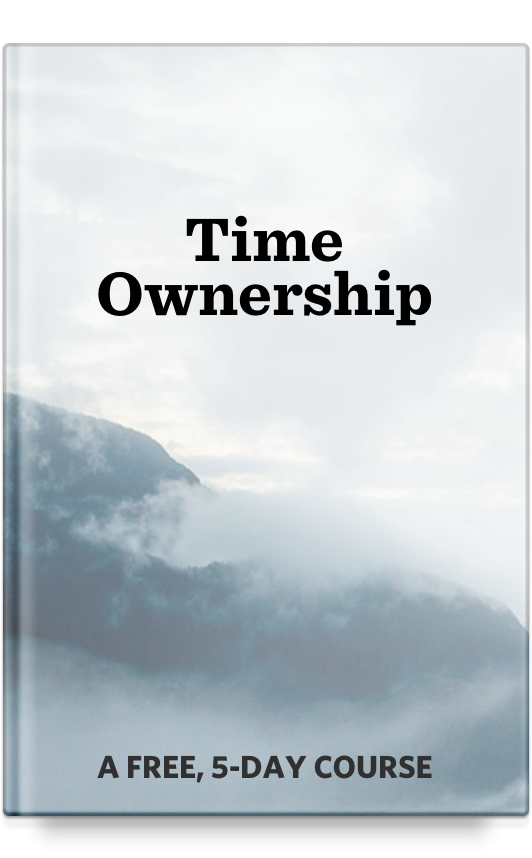
Last week I was in San Diego for an online marketing conference. And I was blown away by the quality of the event.
This was my very first “marketing” conference. And, to be candid, I wasn’t sure what to expect. My stereotyped assumption of marketing events is that they’re filled with tons of hype and flash, with lots of folks putting on a front about how awesome their business is.

There was some hype and some flash. And, yes, I did get a photo op with an Arancio Atlas Lambo. (Which, ironically, I’m pretty sure belonged to a guest at the conference hotel, and not actually anyone who was attending the marketing conference.)
The conference was Digital Marketer’s Traffic and Conversion Summit. And I walked away very impressed by the overall quality of the people at the event.
The whole vibe of this event was focused on those who are building something awesome and provide genuine value. It was filled with ideas, tactics, and tools to help improve marketing and sales in order to provide more value to others.
I didn’t bump into one single marketing jerk; it was quite the opposite. Everyone I met was further along in their business than me and was building some amazing things.
In short, I learned so much at this event.
The sessions I went to were jam packed with helpful and actionable tactics. I had many conversations with folks about their businesses and what they’re doing that is working and what challenges their facing. I even had a free, 1-hour private consulting session from one of the coaches as Sixth Division. (Thanks, Jake!)
Building Requires Implementing, Adjusting, and Repeating
After getting back from San Diego, Isaac and I compiled all our notes from the weekend. And we now have a 5,000-word document that’s filled with ideas, strategies, action items, resources, and other takeaways.
During our next work cycle we’ll be focusing on a few of those action items. I’m very excited to have some practical ideas for how we can continue growing and scaling the business this year.
Speaking of which… I’ve realized that, as you seek to grow your business, there’s not a singular best way.
We all know the basic premise of do the best work you can; focus on serving others; don’t be shy about selling; etc.
But what I’m discovering recently is that business growth and development is very much about iteration and experimentation. There is no “secret formula” because your product is unique, your customers are unique, and your messaging is unique.
That’s why it’s so important to know the difference between building a business and implementing an idea. Implementing a single idea is not the same as building something, and one person’s silver bullet idea that changed everything for their business is probably not going to be the same solution for you.
To build something, it is a long-game process of continual implementation with short feedback loops. You implement, then you measure and adjust, then you implement again, measure and adjust again, etc.
Here are four things to keep in mind when you are planning your idea-implementation strategy (via Brad Marineau’s session):
- Beware of “Generic”. t’s easy to make a generic plan, but it’s impossible to execute on something that is generic and vague. You have to be specific.
- Beware of “we could”. Don’t dream up something with a massive scope that is far too big and lofty. Just get started and focus on the core essentials right now, and then iterate later.
- Make a customer journey playbook. This is something that is high-level and lists out the core strategies you’ll use for your business strategy.
- Make an executable blueprint. This is based on the customer journey playbook, and contains detail. If you were to hand your executable blueprint over to someone in your company, would they know what to do and what to build? It should have all the information necessary for someone to take action.
On Providing Value
Don’t use automation to avoid personal conversations. Instead, use automation to help facilitate personal connection. While marketing automation does make it easier to “sell while you sleep”, the whole aim of it should be to better serve and connect with others.
You have to provide MORE value than you ask for. Ideally, you can provide significantly more value than you ask for in return. The goal is far more than merely a HAPPY customer, the goal is a BETTER customer — you want their life to be noticeably better after working with or using your product or service.
Related reading: The Art of Price and Value
On The Customer Journey and Using a Narrative
Your product or service exists to move people from a less desirable before state to a more desirable after state.
As mentioned above, you need to provide MORE value than you are asking for, and as such you should articulate what that value is. Stop talking about your products and start talking about the “after state” of your customer. Great sales copy simply articulates the shift from the before to after state.
A Customer Journey Architect is someone who helps design the storyline / narrative of your ideal customer and their journey. And then who helps make sure that all the tools and software and strategy and copywriting that you do fits together into the bigger picture narrative and keeps it all focused on the customer.

Donald Miller’s presentation (pictured above) was fantastic; I’d love to go through his Story Brand workshop. For more on this you should check out his free video course, the 5 Minute Marketing Makeover — it’s a great place to start.
The main point was that, by using story and narrative, people are fare more likely to be engaged.
You do this by starting with a character who has a problem. Then, the character meets a guide. And it’s important to remember that the role of the guide is to help the character win.
Your product or service is not hero, your customer is. Your job is to be the guide.
Next, the guide gives a plan to the hero (1… 2… 3…) — these are small, easy, micro steps that are not intimidating.
Then, the guide calls the hero to action; challenge them! And there must be stakes to the challenge. What does it look like to win or lose?
Regarding Sales
Smart business owners focus on the conversion between decision and action. (i.e. sales conversion) This is where there will be the greatest impact on your business model.
Don’t focus first on creating awareness for your product or service, focus first on creating something amazing and then work backwards, starting from the post-checkout process. By working backwards like this it means you’re optimizing and improving on the areas that will have the most impact. Plus, it is easier to focus on doubling your conversion rate at the point of sale than it is to focus on double your incoming traffic or inbound leads.
On your landing page, if you confuse you lose. People will buy into what they understand the fastest. Don’t make them work to understand. Imagine that every bit of information on your sales page is an 8-pound bowling ball. And if you use “insider language” then it’s like covering that bowling ball in Vaseline. And so, every time you tell your customer something, it’s like handing them a bowling ball. They can’t hold very much at one time, and they certainly can’t handle a slippery bowling ball.
For more reading, check out my content marketing series: Part 1, 2, and 3.
And if you have any questions, comments, ideas, hit me up on Twitter.
